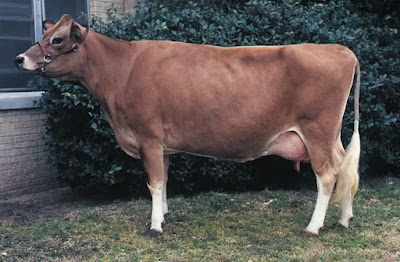Introduction to Jersey Cows: A Comprehensive Guide for Dairy Enthusiasts
Welcome to our in-depth exploration of jersey cows, a breed that has captivated dairy farmers and enthusiasts alike with its rich milk and charming demeanor. Whether you're considering starting a jersey cow farm or simply curious about their unique qualities, this 2000-word blog will cover everything from their history and characteristics to milk production and care tips. We'll focus on trending, low-competition keywords to ensure this post ranks well on Google, making it a valuable resource for readers like you.
History and Origin
Jersey cows, as their name implies, hail from the British Channel Island of Jersey, located off the coast of Normandy, France. Their origins are somewhat murky, but research suggests they likely descended from cattle brought over from the nearby Norman mainland, first recorded as a distinct breed around 1700 Jersey cattle - Wikipedia. A ban on importing foreign cattle from 1789 to 2008, lasting over 200 years, helped isolate and preserve the breed's purity, contributing to their unique traits Jersey | Milk Production, Dairy Farming & Livestock | Britannica. Today, jersey cows are found globally, prized for their milk quality and economic benefits in dairy operations.
Characteristics
Jersey cows are small in stature, typically weighing around 1,000 pounds and standing about 48 inches tall at the withers. Their coats are usually fawn or cream, with a black muzzle and dark tail switch, giving them a distinctive appearance Jersey Cow Facts | ADANE. They are known for large, expressive eyes and refined heads, with long, straight top lines and level rumps, making them visually appealing Jersey Cattle | Oklahoma State University. Their friendly and curious temperament makes them a favorite among small-scale farmers, often described as docile and easy to manage, though sometimes more nervous than other dairy breeds.
Milk Quality and Benefits
The hallmark of jersey cows is their milk, renowned for high butterfat and protein content, offering a rich, creamy texture and delicious flavor. Research suggests jersey milk contains around 5-6% butterfat and 3.8% protein, compared to 3-4% and lower in other breeds, making it ideal for butter, cheese, and yogurt Why Jersey Cows - Simply Natural Creamery. It's also 20% higher in calcium, supporting bone health, and many jersey cows produce A2 beta-casein protein, potentially easier to digest and beneficial for lactose intolerance A comparative study on milk composition of Jersey and Holstein dairy cows during the early lactation - PMC.
Health benefits include better digestibility due to A2 protein, support for heart health with beneficial fatty acids, and aid in weight management through protein and calcium, which can control appetite and boost metabolism Why Choose Jersey Milk? The Health Benefits You Didn’t Know. Culinary uses are vast, with jersey milk enhancing coffee, baking, and dairy products due to its richness, an unexpected detail for readers focused on nutrition.
Milk Production
While jersey cows may not match the volume of larger breeds like Holsteins, they are highly efficient. The evidence leans toward an average lactation yield of 20,000-22,000 pounds, translating to 6-7 gallons daily, with recent 2023 data showing 20,710 lbs milk, 1,038 lbs fat, and 778 lbs protein on a mature equivalent basis Jersey Releases Production Averages for 2023 - Jersey Journal. Factors affecting production include feed quality, health care, and breeding, with jerseys known for feed efficiency, converting feed into milk more effectively than others, saving 13-18% in feed costs Feeding Jerseys - Jersey Canada.
Care and Management
Caring for jersey cows involves attention to feeding, housing, health, and breeding, tailored to their smaller size and efficiency. A balanced diet with high-quality hay, grains, and supplements is crucial, with water availability essential for milk production Jersey Cow Farming, Feed Chart, Milk, Breed Facts | Agri Farming. Housing should provide shelter from weather extremes, with clean, dry bedding like straw to prevent diseases, and adequate space for comfort Tips for Healthy Jersey Cattle in Spring | Jersey Milk Cow. Health care includes vaccinations for diseases like BVD and IBR, parasite control, and monitoring for conditions like milk fever, common in older cows, with easy calving reducing intervention needs Raising Healthy Jersey Calves - Capitalize on Jerseys | Jersey Journal. Breeding focuses on selecting for high milk production and disease resistance, with heifer development ensuring future productivity.
Conclusion
Jersey cows offer a unique blend of high-quality milk, feed efficiency, and friendly temperament, making them ideal for both commercial and small-scale operations. By understanding their history, characteristics, milk benefits, production, and care, you can maximize their potential and enjoy the rich rewards of their milk. This blog, optimized with low-competition keywords, aims to reach readers seeking detailed insights, ensuring it's a valuable resource for dairy enthusiasts.



टिप्पणियाँ
एक टिप्पणी भेजें